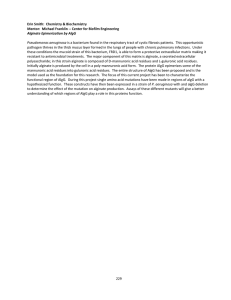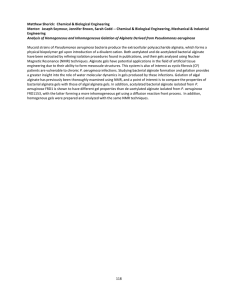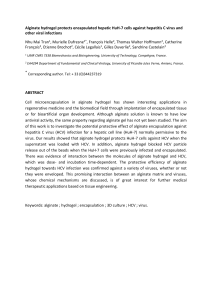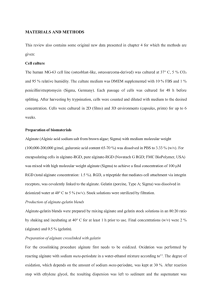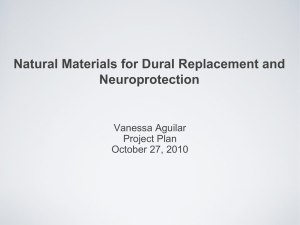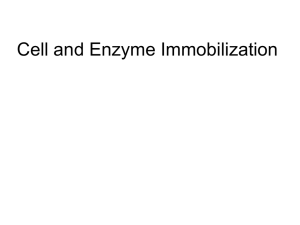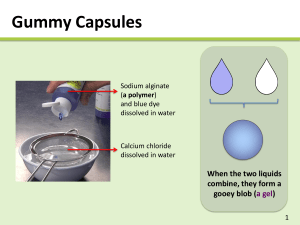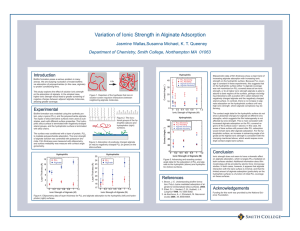Microfluidic Direct Writer for Fabricating Cell
advertisement
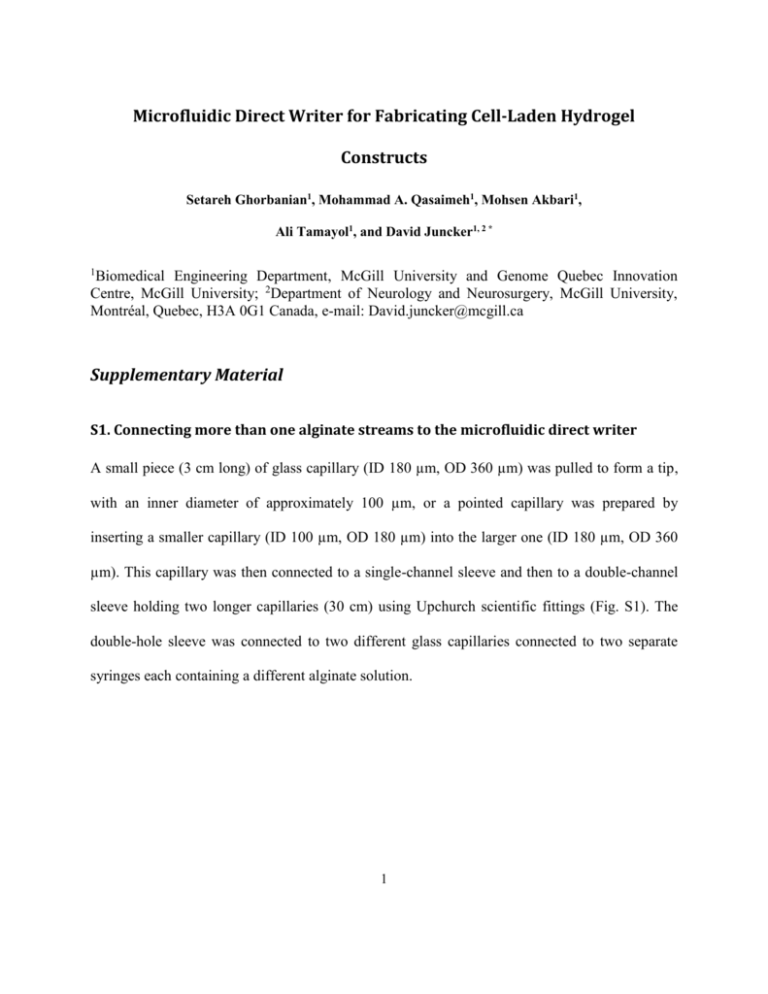
Microfluidic Direct Writer for Fabricating Cell-Laden Hydrogel Constructs Setareh Ghorbanian1, Mohammad A. Qasaimeh1, Mohsen Akbari1, Ali Tamayol1, and David Juncker1, 2 * 1 Biomedical Engineering Department, McGill University and Genome Quebec Innovation Centre, McGill University; 2Department of Neurology and Neurosurgery, McGill University, Montréal, Quebec, H3A 0G1 Canada, e-mail: David.juncker@mcgill.ca Supplementary Material S1. Connecting more than one alginate streams to the microfluidic direct writer A small piece (3 cm long) of glass capillary (ID 180 µm, OD 360 µm) was pulled to form a tip, with an inner diameter of approximately 100 µm, or a pointed capillary was prepared by inserting a smaller capillary (ID 100 µm, OD 180 µm) into the larger one (ID 180 µm, OD 360 µm). This capillary was then connected to a single-channel sleeve and then to a double-channel sleeve holding two longer capillaries (30 cm) using Upchurch scientific fittings (Fig. S1). The double-hole sleeve was connected to two different glass capillaries connected to two separate syringes each containing a different alginate solution. 1 Fig.S1 T-connection, connecting two syringes with different cells to a pulled capillary or one with the smaller inserted tip. S2. Cell toxicity experiments for all reagents HEK cells were cultured in 12 well plates. After two days of incubation in cell medium, the media was removed and replaced with 500 µl of the following: 2% CaCl2, 2% CaCl2 in (50%, 25% or 10%) glycerol, 2% CaCl2 in HEPES buffer and 50% glycerol, 0.5% EDTA or red, green or blue food dyes. Cells were incubated with the above mentioned solutions for 30 minutes. Solutions were then removed, and replaced with 0.5 ml trypsin and EDTA mixture for 30 minutes. Subsequently 0.5 ml cell media was added and the content of the wells were placed into centrifuge tubes where 0.2 ml Trypan blue was added, incubated for 15 minutes and counted for live/dead cell number. To examine the effect of encapsulation and direct writing of cells within alginate fibers, biocompatibility and toxicity tests were done. When treated with EDTA, most cells were already detached during incubation; therefore, cell number was very low. However, cells which were still attached to the surface (10% of the original number) were 80% live. When treated with CaCl 2, 2 50% cell death was observed. When glycerol was added to the solutions, 75% cell death was observed for all percentages of glycerol due to the acidic effect. However, when incubated with 2% CaCl2 with 50% glycerol in HEPES of pH7, 99% cells were attached and alive. S3. Fiber curling and bulging Fig.S2 Formation of curls during the direct write of alginate fibers.(a) Instability of the alginate stream and fiber curling inside the MFDW head due to high Qalginate/QCaCl2 (0.7 here) that could cause channel blockage. (b) Stable coaxial flow by lowering Qalginate/QCaCl2 (0.4 here) in the same MFDW head that prevents fiber curling. (c) Curling of direct written fibers outside the MFDW head, which are results of a high fiber delivery rate and a lower MFDW writing speed. 3 Fig.S3 Bulges observed on alginate fibers delivered into a bath. The fibers contained 0.5 µm diameter fluorescent beads. Bulging occurred when alginate solution was prepared more than two months before experiments. Hence for further experiments, alginate was always kept and used for maximum of two months. Scale bar is presenting 200 µm. 4
